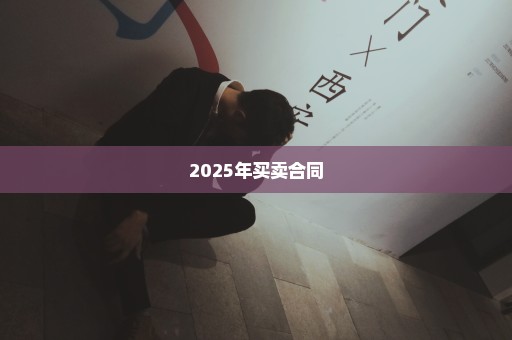on a trip是什么意思
"On a trip"这个短语是指去旅行或外出的意思。人们通常用这个短语来表达他们正在享受一段时间离开家的休闲时光。旅行可以是探索新的地方、感受新文化和风景、结交新朋友或者远离日常繁琐的工作和生活。在旅途中,人们常常可以更充分地享受生活,放松身心,增长见识,拓宽思路,也可以收获难忘的旅行体验。
去旅行可以给身体和心灵带来多种好处。研究表明,旅游有助于缓解压力、减轻焦虑、提高幸福感和满足感。人们在新的环境下容易感到兴奋和愉悦,这样可以帮助他们忘记烦恼,从而放松身心。旅行还可以让人体验新鲜的事物,增加生活趣味性,同时也有助于磨练自己的适应和应变能力,提高自我管理的能力。
去旅行也是一个增进人与人之间交流和了解的方式。在旅途中,人们可以结交新的朋友,探索当地的文化和生活方式,了解别人的观点和想法,拨开阴霾,拉近人与人之间的距离。也靠通过旅行,人们可以更多地体会到人与自然之间的协调与和谐。总之,“on a trip”是一个很好的方式来逃离繁琐的生活并体验美好的东西。
[1] 时间介系词:at,in,on ※ 指一天里的特定时间或时段 at + 时间 ( at 6 o`clock ) at + 时间 ( at 11:45 ) at + 时段 ( at midnight ) at + 时段 ( at lunchtime ) at + 时段 ( at sunset ) at + 时段 ( at weekend ) ※ 指特定的日期或节日 on + 日期 ( on Monday ) on + 日期 ( on 12 May 1981 ) on + 特定节日 ( on Thanksgiving Day ) on + 特定节日 ( on my birthday ) ※ 指特定月份、年份、季节、时段 in + 月份 ( in October ) in + 年份 ( in 1986 ) in + 年份 ( in the 18th century ) in + 季节 ( in the winter --- the可省略 ) in + 时段 ( in the past ) in + 时段 ( in the future --- the可省略 ) [2] 位置介系词:at,in,on in + 城市 ( in Taipei ) in + 国家 ( in Canada ) ※ 指某些事件 at + 事件 ( at the party ) at + 事件 ( at the concert ) at + 事件 ( at the conference ) ※ 指位于某些地点 at + 地点 ( at home ) at + 地点 ( at school ) at + 地点 ( at college ) ※ 指某些建筑物或里面发生的事件 at + 建筑物 ( at the airport ) --- 谈到在建筑物里发生的事件可用at in + 建筑物 ( in the cinema ) --- 谈到建筑物本身时可用in ※ 指搭乘交通工具 on + 交通工具 ( on a bus ) on + 交通工具 ( on a train ) on + 交通工具 ( on a plane ) on + 交通工具 ( on a ship ) on + 交通工具 ( on a bicycle ) on + 交通工具 ( on a motorcycle ) on + 交通工具 ( on a horse ) in + 交通工具 ( in a car ) in + 交通工具 ( in a taxi ) [3] 其他用法:in,on ※ 指某些特定事件 on + 特定事件 ( on holiday ) on + 特定事件 ( on a trip ) on + 特定事件 ( on a tour ) on + 特定事件 ( on a cruise ) on + 特定事件 ( on television ) on + 特定事件 ( on the radio ) on + 特定事件 ( on the phone ) on + 特定事件 ( on strike ) on + 特定事件 ( on a diet ) on + 特定事件 ( on fire ) in + 气候 ( in the rain ) in + 气候 ( in the sun ) in + 状态 ( in love ) in + 付款方式 ( in cash ) in + 个人意见 ( in my opinion ) 介系词 at 、on 、in +地点/位置 之比较 [at] 强调场所中的「点」,[on] 强调场所中的「面」及「线」,[in]强调场所中的「立体空间」。 ---------说明----------- (1)[at] 强调场所/位置中的「点」: at 通常用来表示可视为"一点"的场所,即使地方大,只要说话人将其视为"一点",则可用at。 例 1: I saw Tom at the bus stop. (我在公车站见到Tom) 例 2: Our plane stopped at Tokyo for refueling.(我们的飞机停在东京加油) (2)[on] 强调场所/位置中的「面」及「线」: 指在....(面)上,在.....(路线)上 例 1: Don't sit on the ground. (别坐在地面上) 例 2: There's a butterfly on your nose. (有只蝴蝶在你的鼻子上) 例 3: I met her on my way to school. (我在上学的路线上碰见她) (3)[in]强调场所/位置中的「立体空间」: in通常用来表示在某空间之内,不论地点大小,只要说话者着眼于"空间 (在.....里)",即用in。 例 1: There's no one in the room. (没有人在房里) 例 2: The children are playing in the park. (孩子们正在公园里玩耍) 比较1: on a river (在河面上) in a river (在河里) 比较2: in the corner of a room (在房间的角落里—将角落视为一个「长宽高」皆具的"立体空间") at the corner of a street (在街的角落上—将角落视为"一点") on the corner of a street (在街的角落上—强调在街角的"街面"上) ----------------例句比较------------- 比较一at the station 及 in the station (1) We met him at the station. 车站虽是立体空间,但由于此句强调"碰面的地点"(此时的车站如同地图上的一点),因此介系词用表示「点」的 at。 (2) People in the station are tired
weary and exhausted. 说明在车站内的人们很疲累,强调"场所内部的空间",因此介系词用表示「立体空间」的 in。 比较二 on the street 及 in the street (1) I met her on the street. 街虽是立体空间,但此句强调在某"街面上"(有脚踏于地面的感觉)遇见她,因此用表示「面」的 on。 (2) I met her in the street. 说明在街上遇见她,强调被眼前这个街上的立体空间所环绕(有置身于街上这个立体空间的感觉),因此用表示「立体空间」的 in。 比较三on one's way 及in one's way (1) He is on his way home. 回家的道路,是一条路线,强调「线状」空间,因此用表示「线」的 on。 (2) Excuse me! You are in my way! 对方挡住路,是挡住一个「长宽高」皆具的"空间",对方要让出一个「立体空间」才能让自已顺利通过。因此用表示「立体空间」的 in。
=) 好劲牙

support!*3*好详细
鹏仔微信 15129739599 鹏仔QQ344225443 鹏仔前端 pjxi.com 共享博客 sharedbk.com
图片声明:本站部分配图来自网络。本站只作为美观性配图使用,无任何非法侵犯第三方意图,一切解释权归图片著作权方,本站不承担任何责任。如有恶意碰瓷者,必当奉陪到底严惩不贷!
 百科狗
百科狗



